ASRock X99 WS-E/10G Motherboard Review: Dual 10GBase-T for Prosumers
by Ian Cutress on December 15, 2014 10:00 AM EST- Posted in
- Motherboards
- IT Computing
- Intel
- ASRock
- Enterprise
- X99
- 10GBase-T
The ASRock BIOS and software has changed little since our review of the ASRock X99 WS, and hence is updated here with the WS-E/10G specific information.
ASRock X99 WS-E/10G BIOS
The ASRock BIOS shifted slightly between Z87 and Z97, and it is the Z97 implementation we get on X99. This means the starry background is gone, replaced with a dark and blue-crystalline image. The icons are also reduced to mere text with a small image and the menu sections are of equal size which I prefer. There is also an adjustment to the OC Tweaker layout, which we will come to.
There is no ‘Easy Mode’ for the ASRock BIOS, with entry direct into this first Main screen. The right hand side of the BIOS is for description of the option selected, and the main segment shows information such as the BIOS version, CPU installed, CPU speed and memory installed. As mentioned in previous reviews, having some set of information relating to CPU voltages, temperatures and fan speeds might be useful here. If ASRock was to do an Easy Mode, it would make sense to have a one-button overclock option as well.
OC Tweaker takes heed of one of my previous complains about the ASRock overclock options. Previously there used to be a long list of options that continuously grew, depending on what options were left open to the user. For X99, ASRock has condensed these options into separate submenus similar in design to those we see on a GIGABYTE motherboard. Note that ASUS and MSI BIOSes currently go half-way between these extremes, offering some basic options with the more advanced ones in separate menus.
ASRock cuts straight to the chase – the first two options deal with overclocking. We have touched on features like Multi Core Enhancement many times previously, but it is interesting to have it so high up on the list of options. The Optimized CPU OC Setting gives some easy selections for overclocks based on ASRock’s internal testing:
In line with our overclock testing, 4.0 GHz and 4.2 GHz should be achievable by all CPUs, with 4.4 GHz by most and 4.5 GHz by around half, given sufficient cooling methods.
The OC Tweaker menu is split into four sections. CPU Configuration gives options for CPU Ratio, multiplier, frequency, turbo boost and power limits:
DRAM Configuration allows for XMP application, DRAM strap adjustment, DRAM voltage and sub-timing adjustment, all the way through primary timings, secondary timings, tertiaries and others.
ASRock still uses the DRAM Tweaker function to fine tune the JEDEC and XMP responses to each memory kit. The ASRock BIOS also offers a DRAM Frequency overclocking preset list which will adjust the CPU strap and BCLK frequency needed to achieve various speeds.
The FIVR Configuration menu from the OC Tweaker page deals primarily with the CPU and CPU Cache/uncore voltages.
The Voltage Configuration menu has the other voltages on the system, including VCIN to the FIVR and load line calibration. The Load Line Calibration option also comes with a handy graph showing what each setting means:
Unfortunately this arrangement of voltages is mildly confusing. Typically an overclocker will adjust the CPU voltage and the Load Line Calibration settings enough to get the right combination, and ASRock has placed these options in two different menus. If the CPU VCore option could be duplicated in the Voltage Configuration menu, this would be preferable.
The Advanced tab deals with other elements of the system configuration, such as the chipset, storage and super IO calibrations. This includes fixing power modes, PCIe linking speeds, disabling or enabling onboard controllers and adjusting RAID configurations.
An adjustment to the X99 WS BIOS is that the Active Page on Entry setting has been moved here.
By default the ‘Above 4G Decoding’ is disabled, and I am surprised not to see an option here to enable the Thunderbolt header as is typically present in TB capable products.
The Tools menu is typically where ASRock tries out its more unusual ideas, although we do not get anything new for X99 that we have not seen on Z97 already. The System Browser shows the different elements of the motherboard and what is detected:
The Online Management Guard (OMG) allows the user to enable or disable the network ports at various times of the day, as determined by the system time:
(It is amusing that this feature is aimed more at controlling when a child is allowed online, but X99 is not exactly a system configuration used as secondary machines.)
The Dehumidifier function now gets its own sub menu, allowing fans to spin for a fixed time after the machine is in S5:
The H/W Monitor tab is where the temperatures, fan speeds and voltage monitoring tools are all kept, and we have seen an effort by the other manufacturers to improve the fan control situation. ASRock now joins them with the FAN-Tastic tuning option, moving into a more interactive type of scenario. This extends the multi-point gradient options into something more clickable, similar to the ASUS implementation. For example, a user can put a fan into one of five modes or customize the profile:
Rather than using the interface, users can do it the older way:
There is also an option to select which temperature sensor is being read from to make these adjustments.
The rest of the BIOS deals with security, boot order and fast boot options. In the Save and Exit menu we do get options for Boot Override:


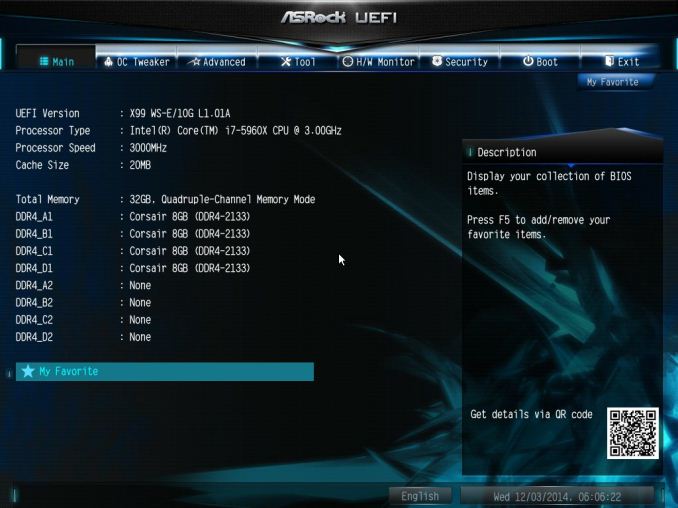
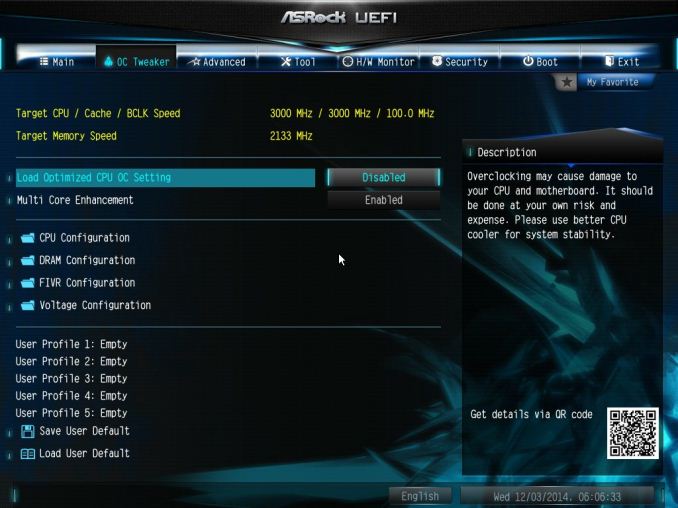
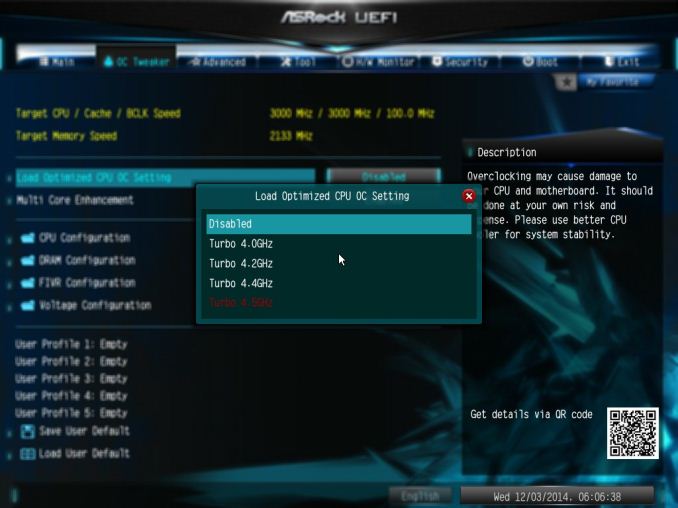
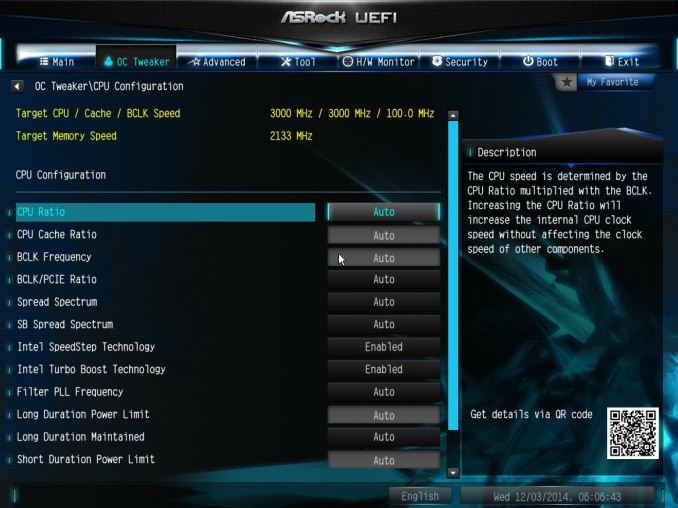
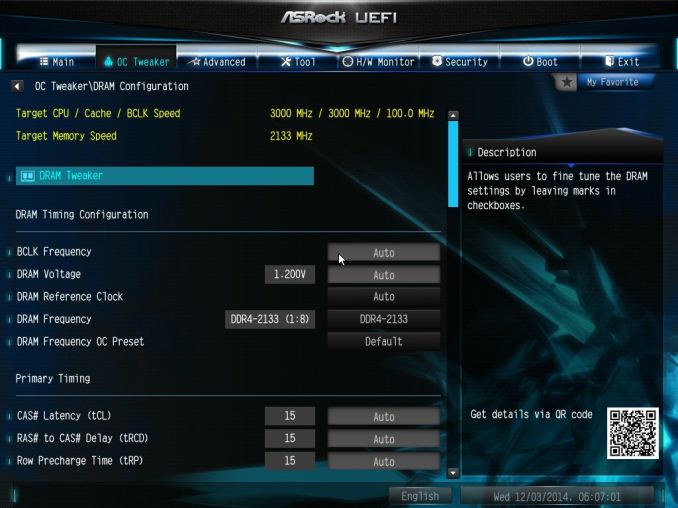
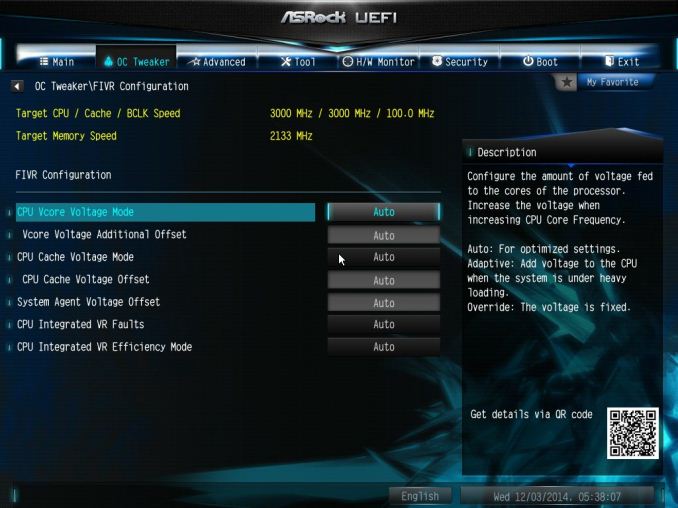
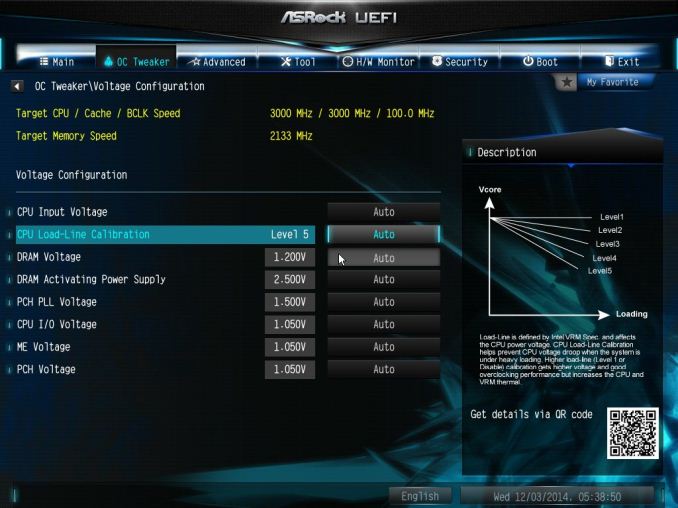
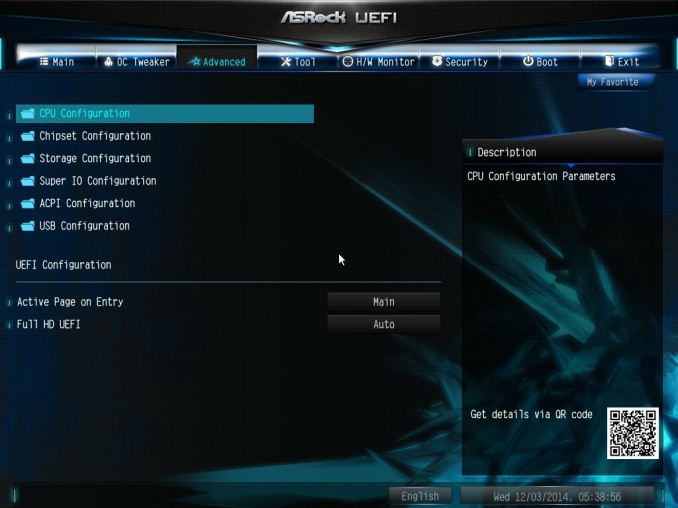
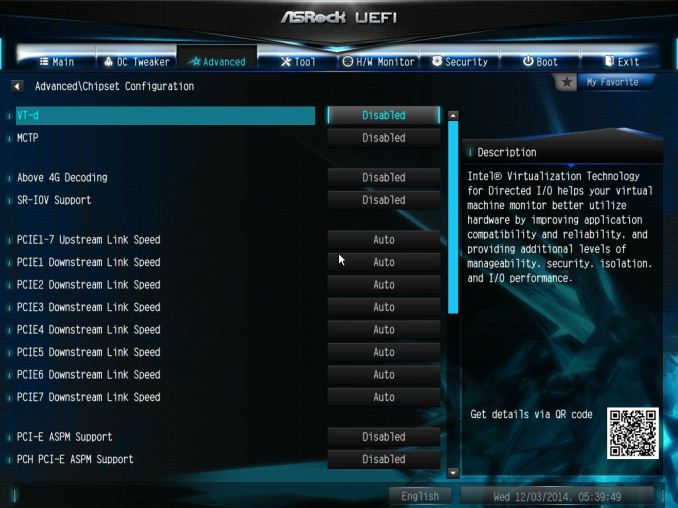
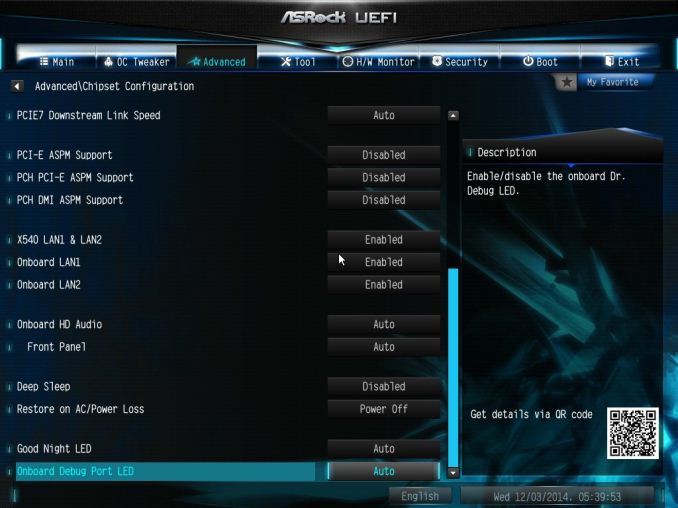

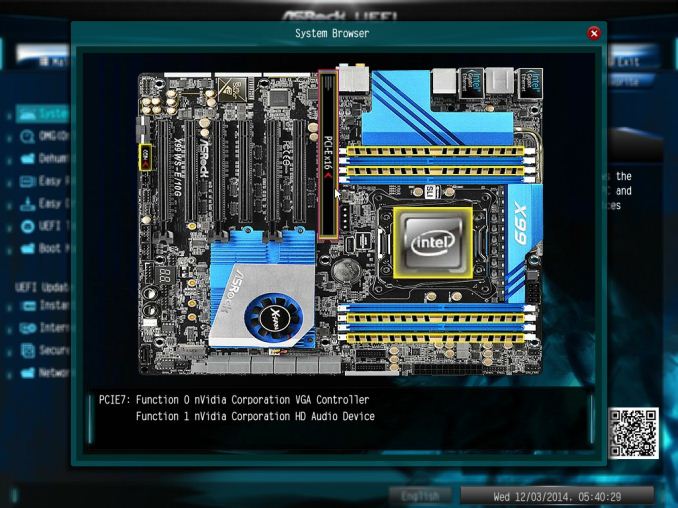

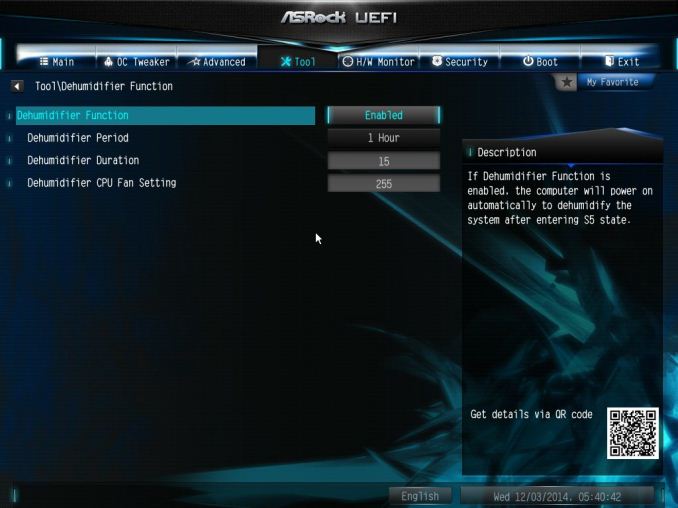


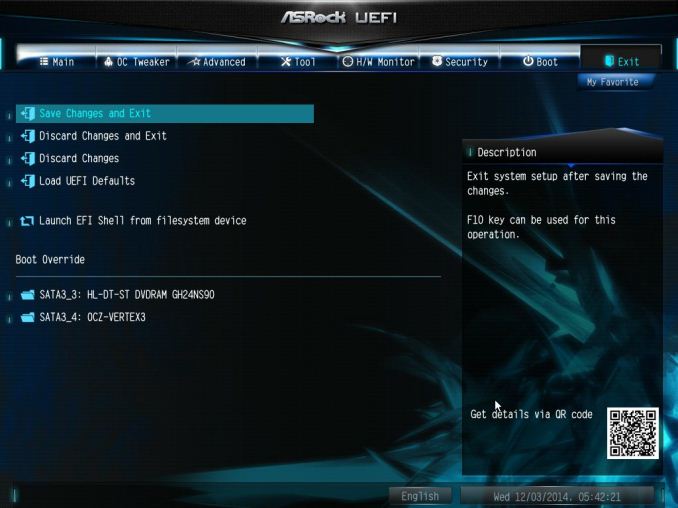














45 Comments
View All Comments
AngelosC - Wednesday, January 7, 2015 - link
They could have tested it on Linux KVM with SR-IOV or just run iperf on Linux between the 2 interfaces.They ruined the test.
eanazag - Monday, December 15, 2014 - link
Okay, so the use case of a board like this is for network attached storage using iSCSI or SMB3. That network storage has to be able to perform above 1GbE bandwith for a single stream. 1 GbE = ~1024 Mbps = ~128 MBps no counting overhead. Any single SSD these days can outperform a 1GbE connection.If you're considering this board, there is a Johan written article on Anand that is a couple of years old about 10GbE performance. It will cover why it is worth it. I did the leg work and found them.
http://www.anandtech.com/show/4014/10g-more-than-a...
http://www.anandtech.com/show/2956/10gbit-ethernet...
extide - Monday, December 15, 2014 - link
At the end of the day, I still think I'd rather the X99 Extreme 11.tuxRoller - Monday, December 15, 2014 - link
How Is the DPC measurement made? Average (which?), worst case, or just once?Ian Cutress - Tuesday, November 1, 2016 - link
Peak (worst value) during our testing period, which is usually a minute at 'idle'TAC-2 - Tuesday, December 16, 2014 - link
Either there's something wrong with your test of the NICs or there is a problem with this board. I've been using 10GBase-T for years now, even with default settings I can push 500-1000 MB/s using intel NICs.AngelosC - Wednesday, January 7, 2015 - link
I recon they were not testing this board's most important feature properly.The reviewer makes it sounds like they don't know how to test…
jamescox - Tuesday, December 16, 2014 - link
This seems more like a marketing thing; who will actually buy this? Given the current technology, it seems like it is much better to buy a discrete card, if you actually need 10GB.The feature I would like to see come down to the consumer market is ECC memory. I have had memory start to get errors after installation. I always run exhaustive memory test when building a system (memtest86 or other hardware specific test). I did not have any stability issues. I only noticed that something was wrong when I found that recently written files were corrupted. Almost everything passes through system memory at some point. Why is it okay for this not to be ECC protected? Given how far system memory is from the cpu (with L3 cache, and soon to be L4 with stacked memory), the speed is actually less important. Everything should be ECC protected.
There may be some argument that the gpu memory doesn't need to be ECC, since if it is just being used for display; errors will only result in display artifacts. I am not sure if this is actually the case anymore though with what gpus are being used for. Can a single bit error in gpu memory cause a system crash? I may have to start running gpu memory test also.
petar_b - Thursday, December 18, 2014 - link
ASROCK solely targets users with need of 10G network. If network card was an discrete option price would be lower and they would target wider audience. I like two PLXes, as I can attach all kind of Network, SAS and GPU cards. PLX and ASROCK quality is the reason I use their mobos.Regarding ECC memory for GPU, not agree there. If GPU is used to do math with OpenCL, then avoiding memory errors is very important.
akula2 - Thursday, December 18, 2014 - link
Avoiding memory errors is beyond extremely important in my case when I churn tons of Science and Engineering things out of those Nvidia Titan Black, Quadro and Tesla cards. AMD did an amazing job with FirePro W9100 cards too.